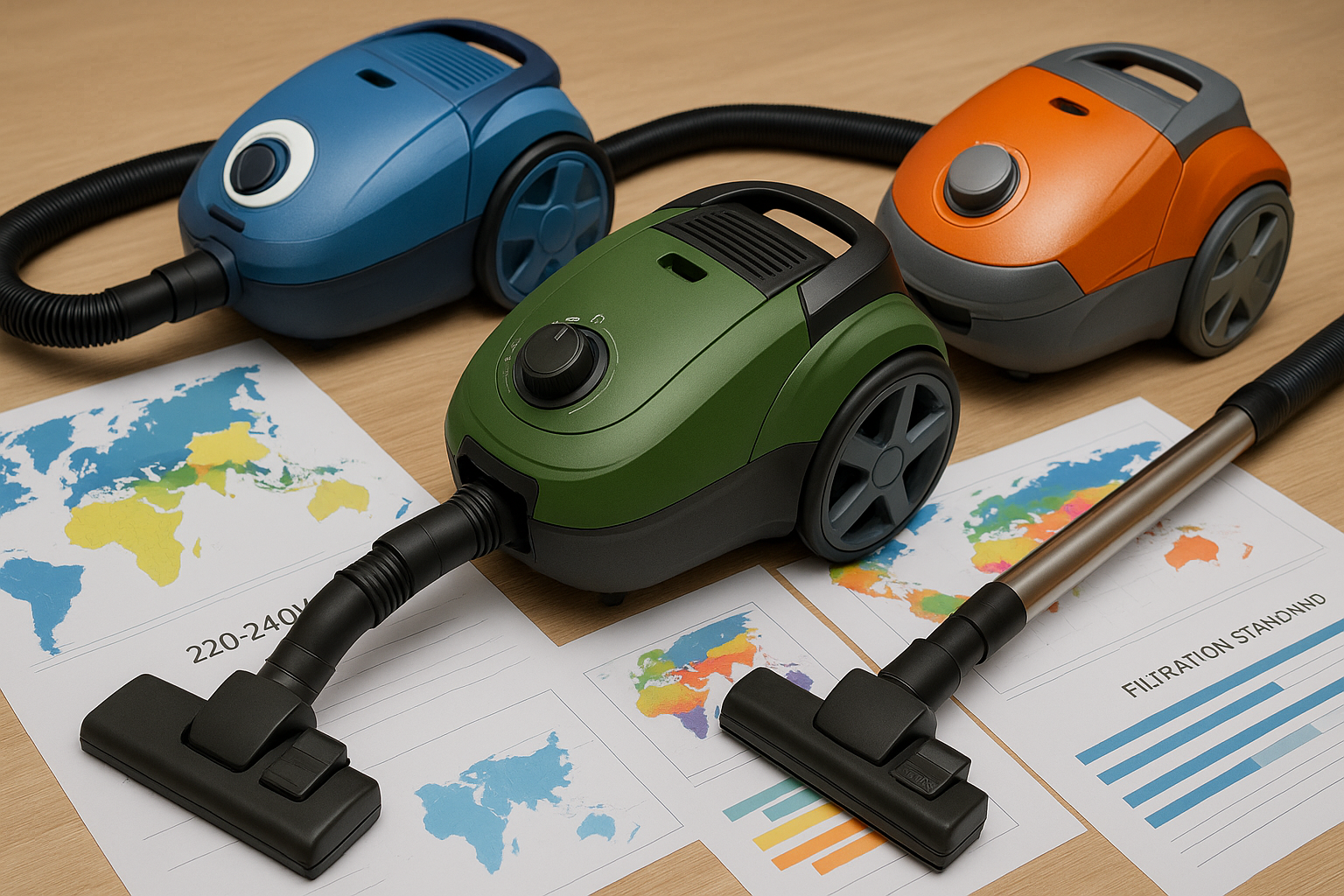When exporting vacuum cleaners to global markets, one-size-fits-all designs are a thing of the past. Regional nuances—such as power standards, filtration regulations, and climate conditions—play a critical role in shaping consumer expectations and regulatory compliance. Exporters who ignore these distinctions risk product failures, compliance penalties, and ultimately, lost market share.
Power Compatibility and Efficiency
Power specifications vary widely across regions. North America predominantly uses 120V at 60Hz, while Europe requires 220-240V at 50Hz. Exporters must adapt vacuum motor designs and charging modules accordingly. For instance, Cordless Vacuum Cleaner units shipped to Japan must comply with both voltage stability and electromagnetic compatibility standards unique to that region. Failure to do so may lead to short lifespan or incompatibility with local sockets. According to UL Solutions, improper voltage adaptation accounts for 18% of product returns in the small appliance export sector.
Filtration Standards and Health Regulations
In Europe, vacuum cleaners must meet HEPA filtration standards due to stricter indoor air quality regulations. In contrast, Southeast Asian markets focus more on moisture management due to high humidity, making Wet Dry Vacuum Cleaners and 4 in 1 Cordless Smart Wet & Dry Vacuum Cleaner models more viable. Research from WHO emphasizes that region-specific indoor allergens and dust particle sizes require tailored filtration technology. Failing to localize these features risks regulatory rejection or suboptimal performance.
Climate-Driven Engineering Adjustments
Climate factors directly affect vacuum performance. Exporters targeting humid regions like Southeast Asia or South America must focus on moisture-resistant components, while drier zones require dust-optimized filtration. For example, in Saudi Arabia’s desert climate, quiet vacuum cleaner models must endure fine sand particles and extended runtime without overheating. A recent case study by Dyson demonstrated a significant increase in market acceptance after redesigning motor airflow for tropical climates.
Modern exporters understand that success relies on offering machines that are not only technically compliant but also user-centric—combining features like high-suction with truly portable convenience, quiet and self-cleaning capability, multi-functional efficiency, long-lasting durability, rapid operation, lightweight mobility, energy conservation, power performance, and ample large-capacity support for both wet and dry usage, resulting in the ultimate vacuum cleaner.
Conclusion
Success in international markets requires more than just competitive pricing—it demands engineering precision aligned with regional needs. Exporters who master this customization will achieve stronger partnerships, lower return rates, and greater brand loyalty.
Explore innovations from Li-ion Cordless Handheld Vacuum Cleaner, Car Vacuum Cleaner, and cordless handheld vacuums product lines specifically adapted for local markets at www.lxvacuum.com.

















